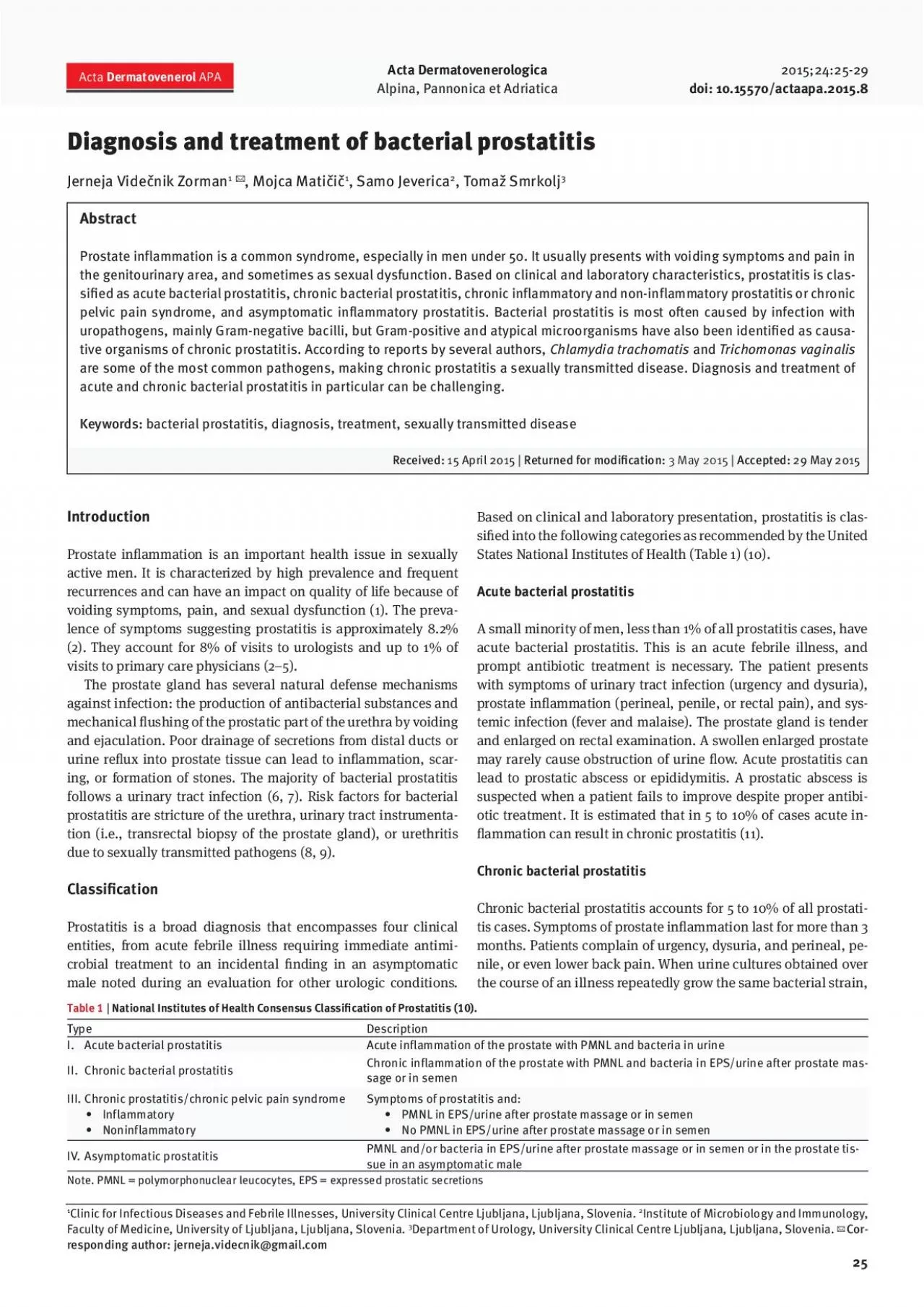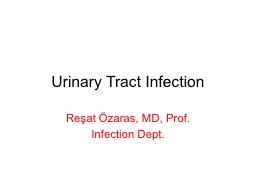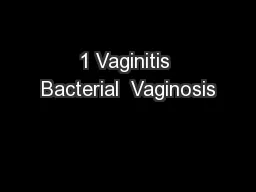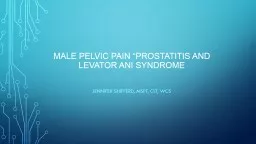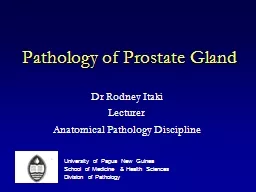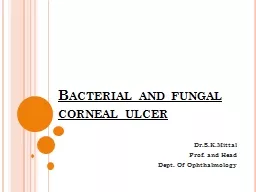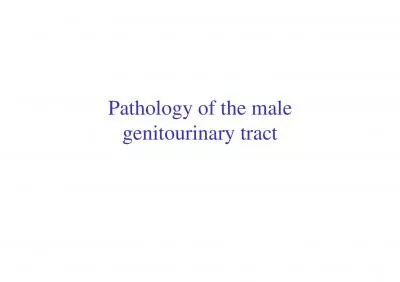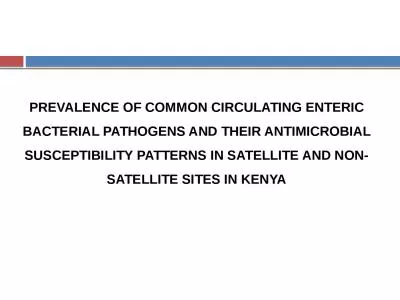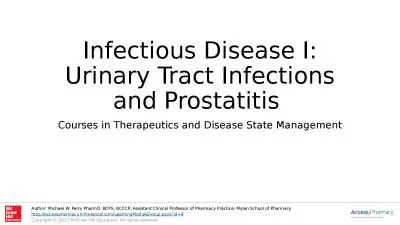PDF-Diagnosis and treatment of bacterial prostatitis
Author : willow | Published Date : 2022-08-16
25 Jerneja Vide31nik Zorman 1 Mojca Mati31i31 1 Samo Jeverica 2 Toma30 Smrkolj 3 1 Clinic for Infectious Diseases and Febrile Illnesses University Clinical Centre
Presentation Embed Code
Download Presentation
Download Presentation The PPT/PDF document "Diagnosis and treatment of bacterial pro..." is the property of its rightful owner. Permission is granted to download and print the materials on this website for personal, non-commercial use only, and to display it on your personal computer provided you do not modify the materials and that you retain all copyright notices contained in the materials. By downloading content from our website, you accept the terms of this agreement.
Diagnosis and treatment of bacterial prostatitis: Transcript
Download Rules Of Document
"Diagnosis and treatment of bacterial prostatitis"The content belongs to its owner. You may download and print it for personal use, without modification, and keep all copyright notices. By downloading, you agree to these terms.
Related Documents

